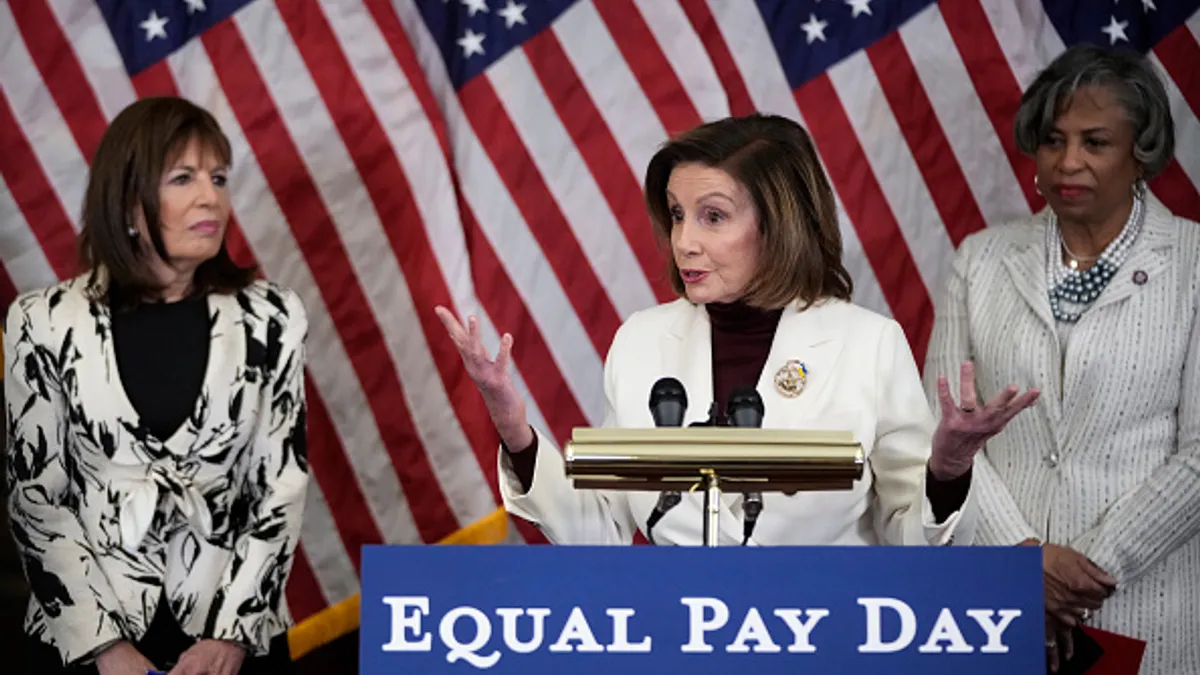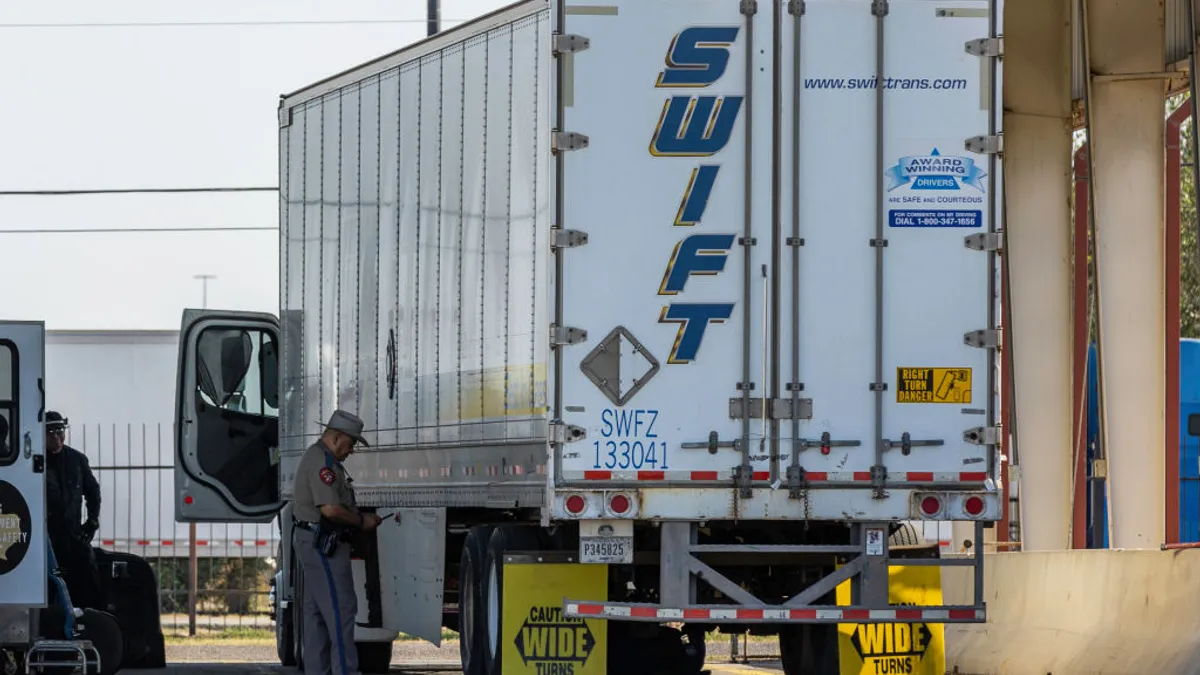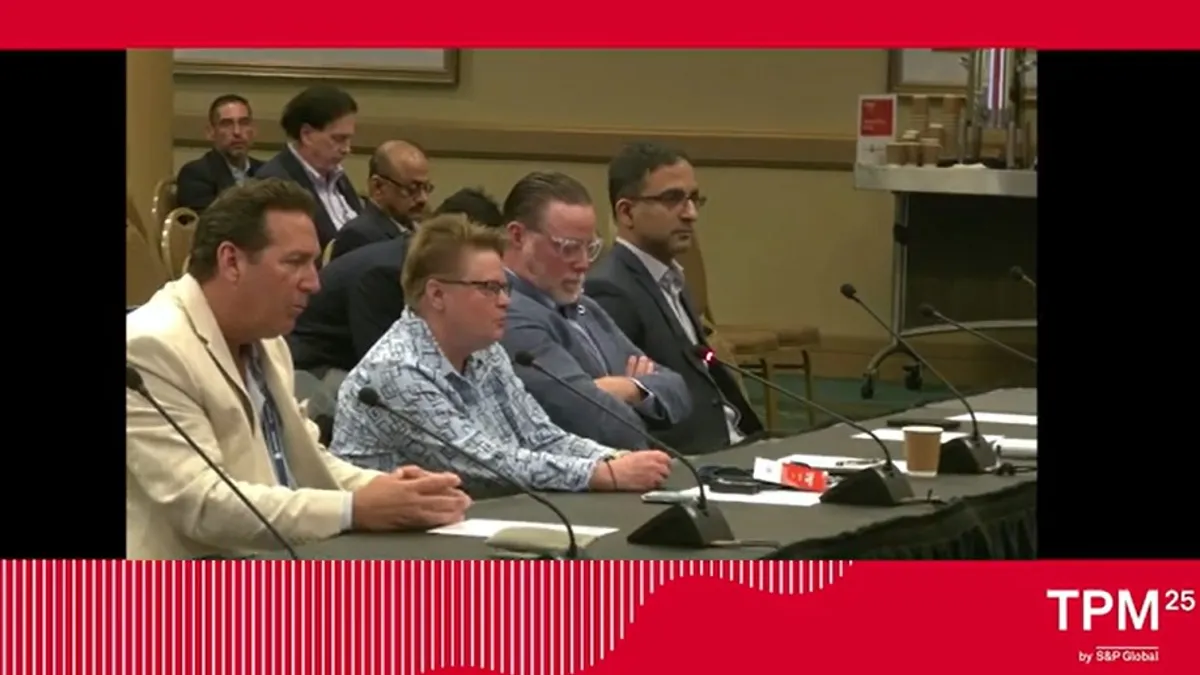An unfortunate reality of the novel coronavirus is that employers are making unexpected layoffs due to revenue shortfalls caused by the sudden halt of most business activity. Given the economic stability and growth of the past decade, this is a sharp turn for many companies, and one that can have long-term ramifications if not executed well.
If an organization does need to lay off employees, experts suggested best practices to keep in mind, as well as specific actions that leadership and HR should avoid. Poor management of the situation can lead to negative reviews on job sites, poor employment branding for the company, low morale among "survivors" and even legal repercussions.
"There is more attention now than ever to how employers are treating their employees," Brian Kropp, chief of research for Gartner's HR practice, told Transport Dive sister publication HR Dive in an email. "How employers manage their workforces across the next five weeks will have lasting implications for their employment brand for the next five years."
The responsibilities of HR during layoffs span legal, compliance and ethics issues as well as engagement and employee branding. Kropp warns that failing to meet ethical, legal and social standards will be very damaging for the company's reputation.
"Managing through this process effectively (or failing to do so) will define the employment value proposition, not to mention the reputation, of a company for years to come," he wrote.
Keeping layoffs fair
Seniority, job performance or skills make acceptable criteria for determining whom to let go. But there are also compliance concerns to note, particularly regarding people on leave or those in a protected class. Guidance from the U.S. Equal Employment Opportunity Commission notes that any disproportionate representation among terminated employees from those groups may create legal liability.
Two legal standards to keep in mind when making workforce reductions are the Federal and State Worker Adjustment and Retraining Notification Act (WARN) and Older Workers Benefit Protection Act (OWBPA).
Once a decision is made, it's important to be as transparent as possible about the decision-making process.
"Any sense of unfairness from a workforce reduction decision will be viewed negatively by the remaining employees," Kropp said. "If the decisions on who was laid off and who wasn't are not clear, then employees will doubt all future talent decisions."
Provide outplacement service
When someone finds out that they are unexpectedly out of a job, the first reaction is often panic. Where will the next paycheck come from? How much is severance? What are the best leads for a new job? The current conditions amid the pandemic magnify these fears, which is why experts recommend providing outbound services to help with healthcare, job search counseling, 401(k) management and more in the interest of alleviating those fears as much as possible.
"Socially responsible and empathetic organizations will provide outplacement services to all employees for a length of time that is reasonable given the economic conditions," Amy Tilles, a principal at Mercer, wrote in a recent report, adding that the U.S. Bureau of Labor Statistics estimates that it takes an average of 27 weeks to find a new job.
"Socially responsible employers should start with a service length for all near this amount of time to ensure that everyone is covered under current market conditions," she wrote.
Make sure senior leadership is sacrificing, too
When delivering the news of layoffs, either to the individuals affected or remaining company employees, it's important to highlight all of the financial measures taken before the decision to reduce headcount. This should include reductions in pay for the company's top earners and cuts to discretionary spending and bonuses.
"Employees expect the senior leaders of their company to absorb as much of the pain as they are," Kropp said. "Employees will be more accepting of the reality of layoffs if they know that senior leaders are sacrificing as well."
Employees would also like to know that leadership considered every possible option before layoffs. As of mid-April, 143 publicly traded companies had cut CEO pay in response to the coronavirus, according to news reports. One of those CEOs is FedEx's Fred Smith, who is taking a 91% salary cut, effective April 1 through Sept. 30. News reports show the announcement came a couple weeks before FedEx Freight issued an undisclosed number of furloughs.
Management should be asking themselves, "‘Can we make sacrifices elsewhere? What are our other options to reduce costs?'" Kenneth Freeman, Dean Emeritus at Boston University's Questrom School of Business, told the Harvard Business Review. "Laying off people should be the last resort," but if the company needs to make cuts, do everything possible to "avoid multiple rounds" of layoffs.
Communicate honestly and directly
Laying off employees is a difficult decision and a trying experience for all involved. Organizational leaders don't need to mince words or paint too rosy a picture about the path forward during this time.
"Employers need to make it clear why the decision was made rather than trying to sell it is a good decision and good outcome for employees," Kropp said. "The biggest mistake that employers make during this time period from a communication perspective is promising stability post layoff," he later added.
Because layoffs become public knowledge as quickly as an affected employee can tweet about it, direct and transparent communication is key.
"Employees read the news and know what is happening at other organizations. The more direct and authentic organizations can be about the communications and rationale, the more accepting employees will be," Kropp said.
This is particularly important for engaging employees who are still with the company, especially the need to responsibly set expectations.
"The desire for employers is to say that after this round of layoffs the company will be stable and there will not be any more layoffs," Kropp said. But, he adds, promising stability does not provide any boost to engagement and "if you promise stability but fail to deliver it, that is the most damaging thing that an employer can do to employee engagement."





















